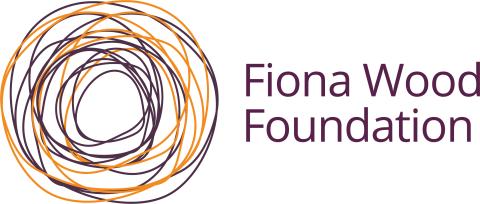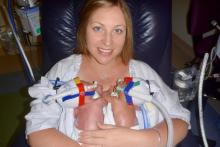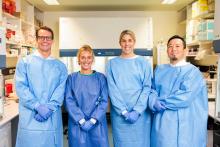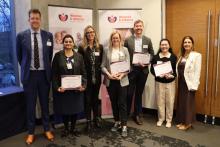The Women and Infants Research Foundation has rebranded after nearly 50 years and some 500 research projects supporting women, babies and families.

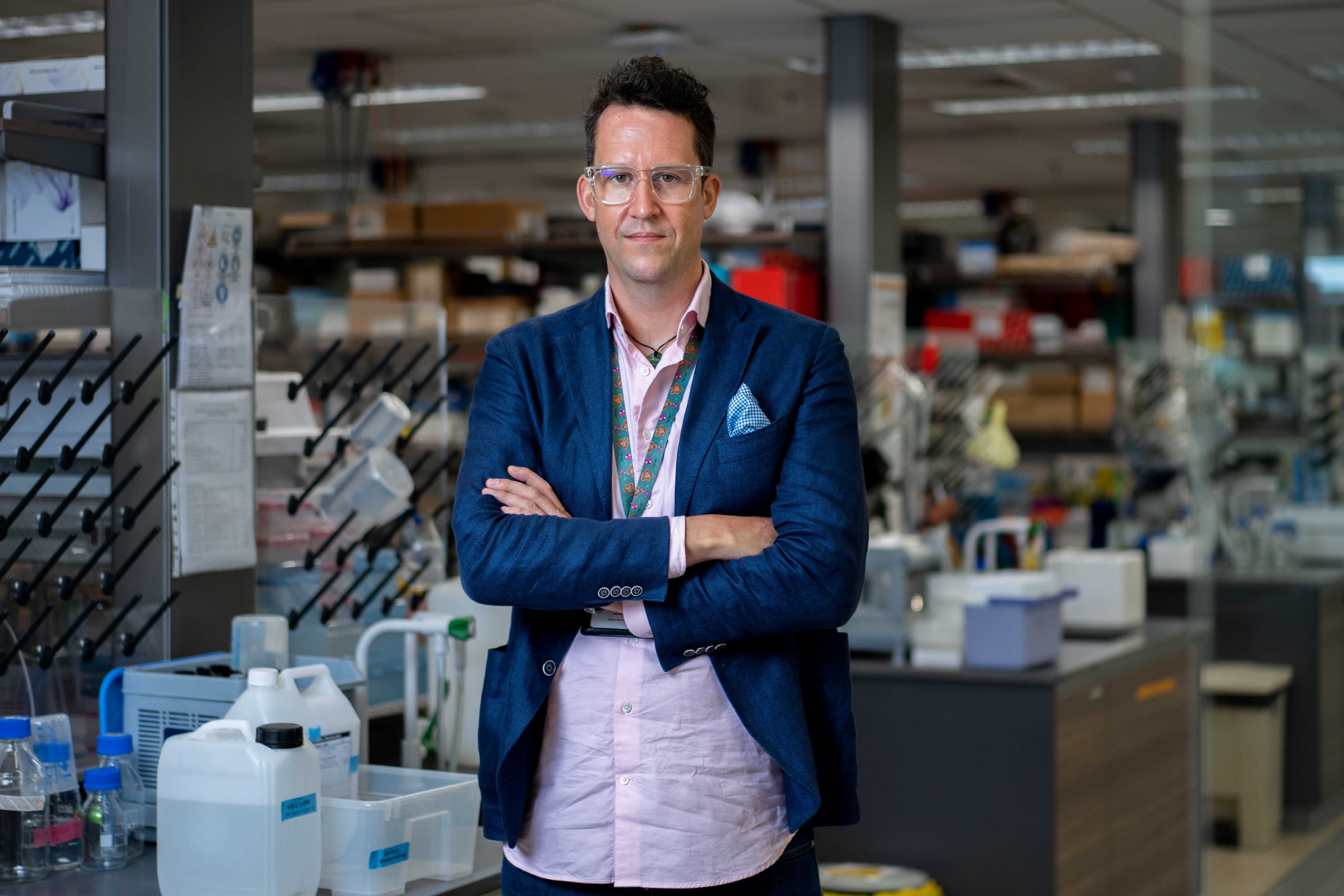
Pioneering artificial placenta technology and reducing preterm births are just two of some 500 research projects the Women and Infants Research Foundation has contributed to across the past five decades.
After nearly 50 years of improving the health of women, babies, and families, WIRF has undergone a major rebrand and launched a new, redesigned website.
The refreshed branding includes a dynamic logo composed of organic shapes that symbolise the connection between woman, baby, family, and heart, paired with a vibrant colour palette.
These elements combine to communicate WIRF’s key values of warmth, diversity and strength, while the foundation’s website has been redesigned to be more user-friendly, accessible, educational, and engaging.
The website also better showcases the breadth and depth of WIRF’s research, healthcare programs and support services, while also offering an improved platform to raise awareness of the foundation’s mission.
WIRF formally unveiled its renewed brand identity and future direction at a sundowner event on May 14, in partnership with Business News.

Professor Kemp (left), Medical Research Minister Stephen Dawson, WIRF Chief Executive Deb Attard Portughes, and Business News Chief Executive Charles Kobelke.
Speaking at the event, WIRF’s chief scientist Professor Matt Kemp said the rebrand was designed to better reflect the contemporary health challenges the foundation was addressing within the community.
“This renewal is very much in keeping with WIRF’s own evolution over the past half century; from a hospital research foundation to a dynamic organisation that plays a critical role in supporting community-focused excellence in women’s, maternal and newborn health research,” Professor Kemp said.
He added that collaboration between research organisations, supporters, and media were more important now than ever before in engaging the community and strengthening research outcomes.
“Today, it is simply not enough to be doing high-quality research that makes a difference,” Professor Kemp said.
“Over the past 50 years, global science has moved the needle an extraordinary amount in terms of understanding the processes that drive some of our most pressing health challenges – preterm birth, maternal and newborn mortality, gynaecological cancers, mental health – and then taking [that] data and converting [it] into highly effective interventions and, more importantly, scalable preventions.
“Despite this progress and this opportunity, women’s and newborn health research is faltering in many places.”
"[S]upporting outstanding science is still absolutely necessary, but it is no longer sufficient." WIRF chief scientist Matt Kemp
Professor Kemp said new research was under threat and existing health advancements were becoming undone around the world.
The US Department of Health & Human services temporarily cancelled funding contracts for the Women’s Health Initiative – the largest women’s health study ever undertaken, involving data from 160,000 women collected over a 30-year period – in April this year.
Meanwhile, Europe reported its largest measles outbreak in 25 years last year and more than 500,000 children across Europe and Central Asia had missed their first dose of the measles vaccine.
“Here in Australia, although common sense and good government still prevails, we cannot afford to be complacent or silent,” Professor Kemp said.
“For organisations like WIRF this means that supporting outstanding science is still absolutely necessary, but it is no longer sufficient."

Professor Kemp speaking at the sundowner event, formally unveiling WIRF's rebrand.
“Not only do we have to advocate for the work we believe in and promote our successes, we need to make sure that we are engaged in vigorous, constant communication with the community, so that people from all walks of life understand what we do, why it is important, and are in turn energised to advocate for the women’s health cause that all of us are so invested in," Professor Kemp said.
Forging a future for women, babies and families
The prevention of preterm birth is one of WIRF’s key research areas and in 2014, the foundation established the WA Preterm Birth Prevention Initiative which reduced the preterm birth rate by 8 per cent.
WIRF then partnered with the Preterm Birth Prevention Alliance to expand the initiative across Australia, resulting in an 11 per cent reduction in national preterm births.
“As a result, not only have we done more to reduce the burden of disease impacting women and newborns than at any time in history, we also have a far clearer idea of the huge task that remains and better research leads than ever to get the rest of the job done,” Professor Kemp said.
Another piece of WIRF’s ground-breaking research centres around the development of artificial placenta technology, an approach that replicates the natural womb environment to provide a safer and more supportive alternative to traditional neonatal intensive care.
WIRF is also at the forefront of advancing antenatal steroid therapy, a crucial treatment that accelerates lung development in preterm babies.
The therapy significantly reduces the risk of respiratory distress syndrome – a leading cause of neonatal mortality – and WIRF’s research revolves around optimising timing, dosage, and effectiveness to both maximise benefits and minimise side effects.

Drs Erin Fee and Sean Carter have been appointed as WIRF's deputy chief scientists.
In addition to its rebranding, WIRF has appointed two early career researchers, Erin Fee and Sean Carter, as deputy chief scientists.
Dr Fee recently completed her PhD thesis work on the optimisation of antenatal steroid therapy, with WIRF securing about $750,000 to support her – and a research assistant – to drive this work to the clinic over the next three years.
Dr Carter’s work includes the development of a transdermal delivery system for antenatal steroids as well as the development of minimally invasive tests for fetal infections using RNA found in the maternal plasma.
The technology used in the latter research is now being used by WIRF to develop an early screening test for ovarian cancer.
"Against a backdrop of global uncertainty in women’s and newborn health research, WIRF’s work is increasingly important." WIRF chief scientist Matt Kemp
Professor Kemp said WIRF was passionate about supporting the next generation of investigators, and over the past two years, the foundation had presented 14 research acceleration awards to WA researchers to support their innovative work.
“By global standards, WIRF is a small organisation, albeit one that punches well above its weight in terms of research output and impact,” Professor Kemp said.
“Against a backdrop of global uncertainty in women’s and newborn health research, WIRF’s work is increasingly important.
“WIRF is able to achieve its outsized impact as a result of the tenacity and skill of its researchers, the dedication of its staff and the generosity of its supporters – both financially and now in helping us showcase the importance of the work we do.”







